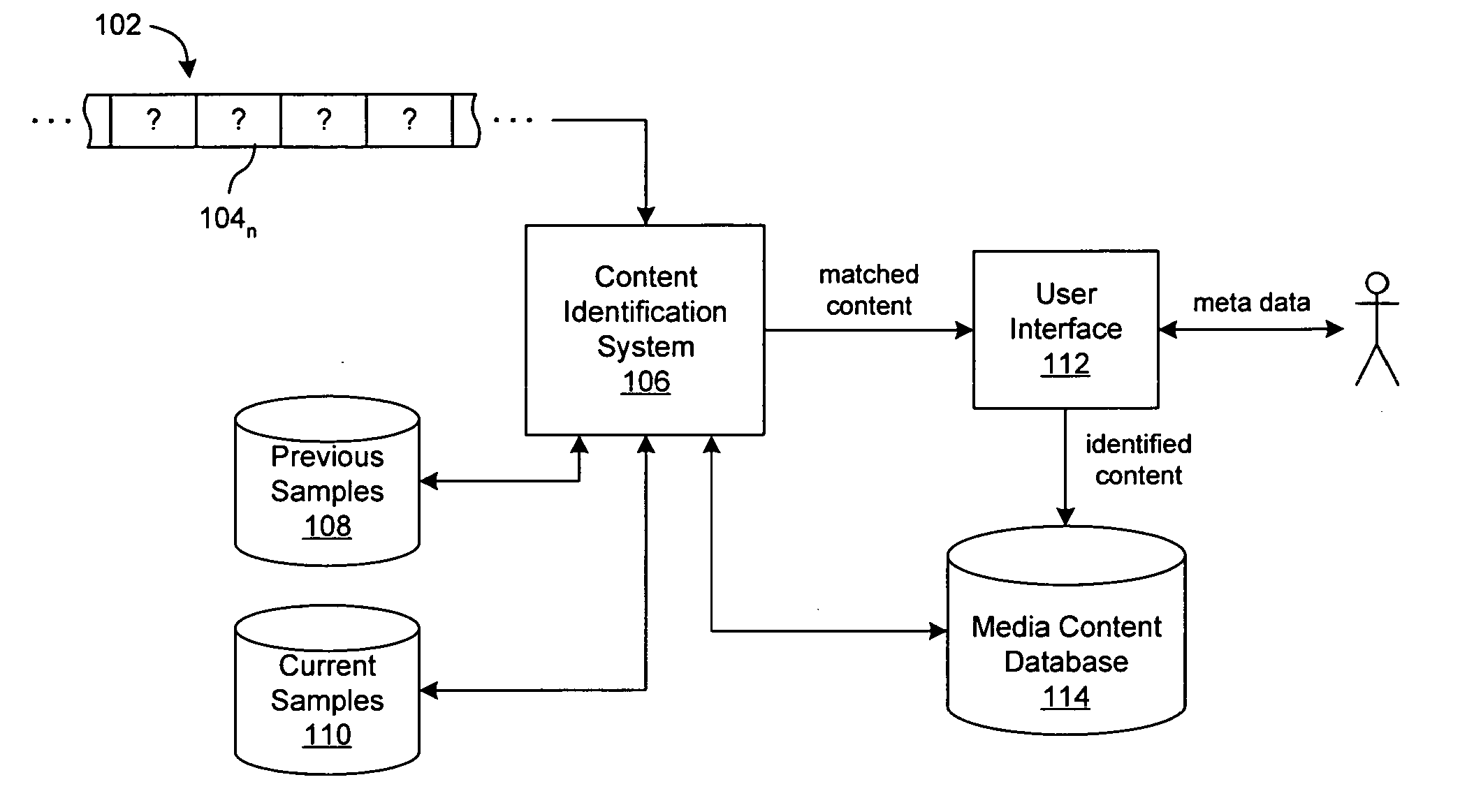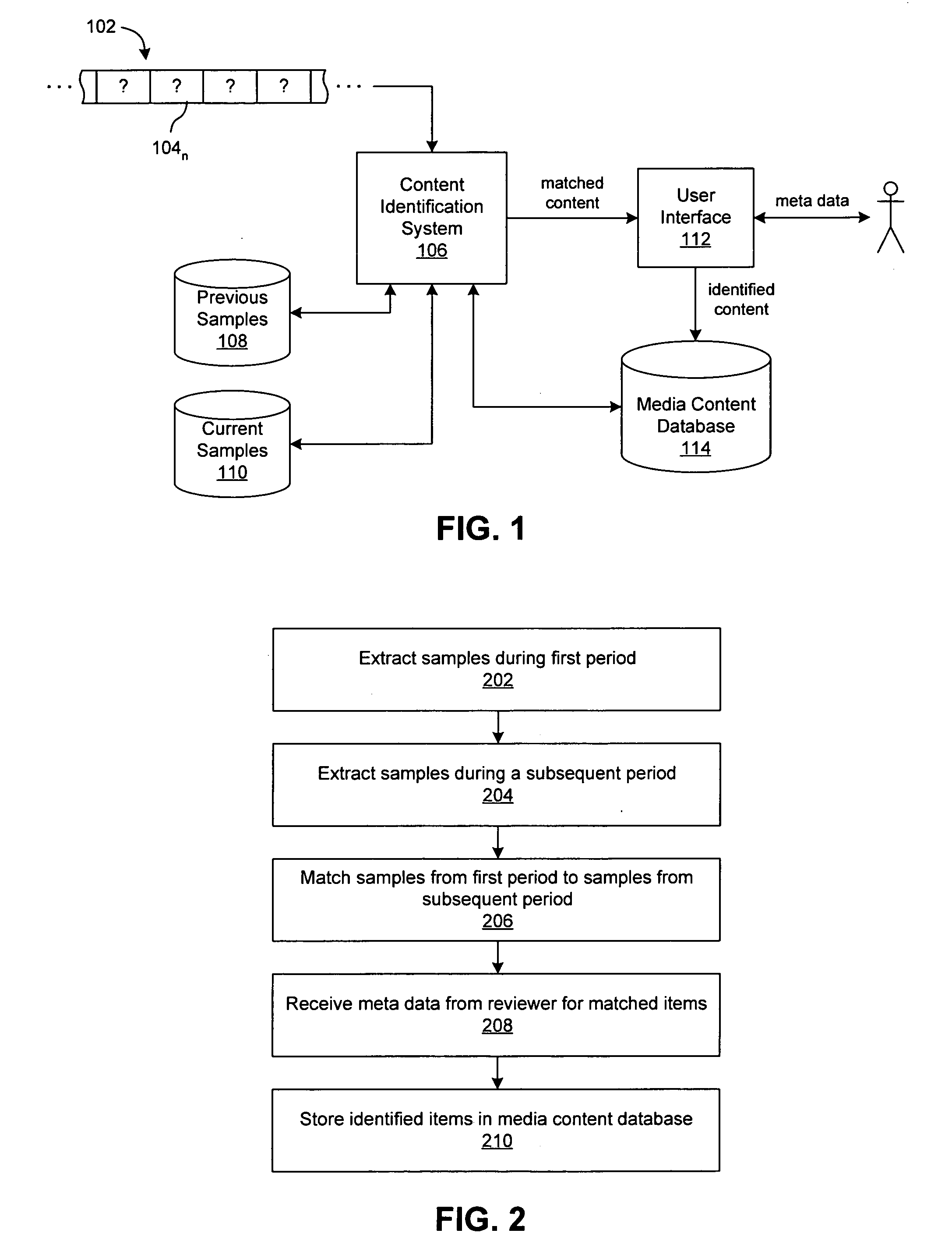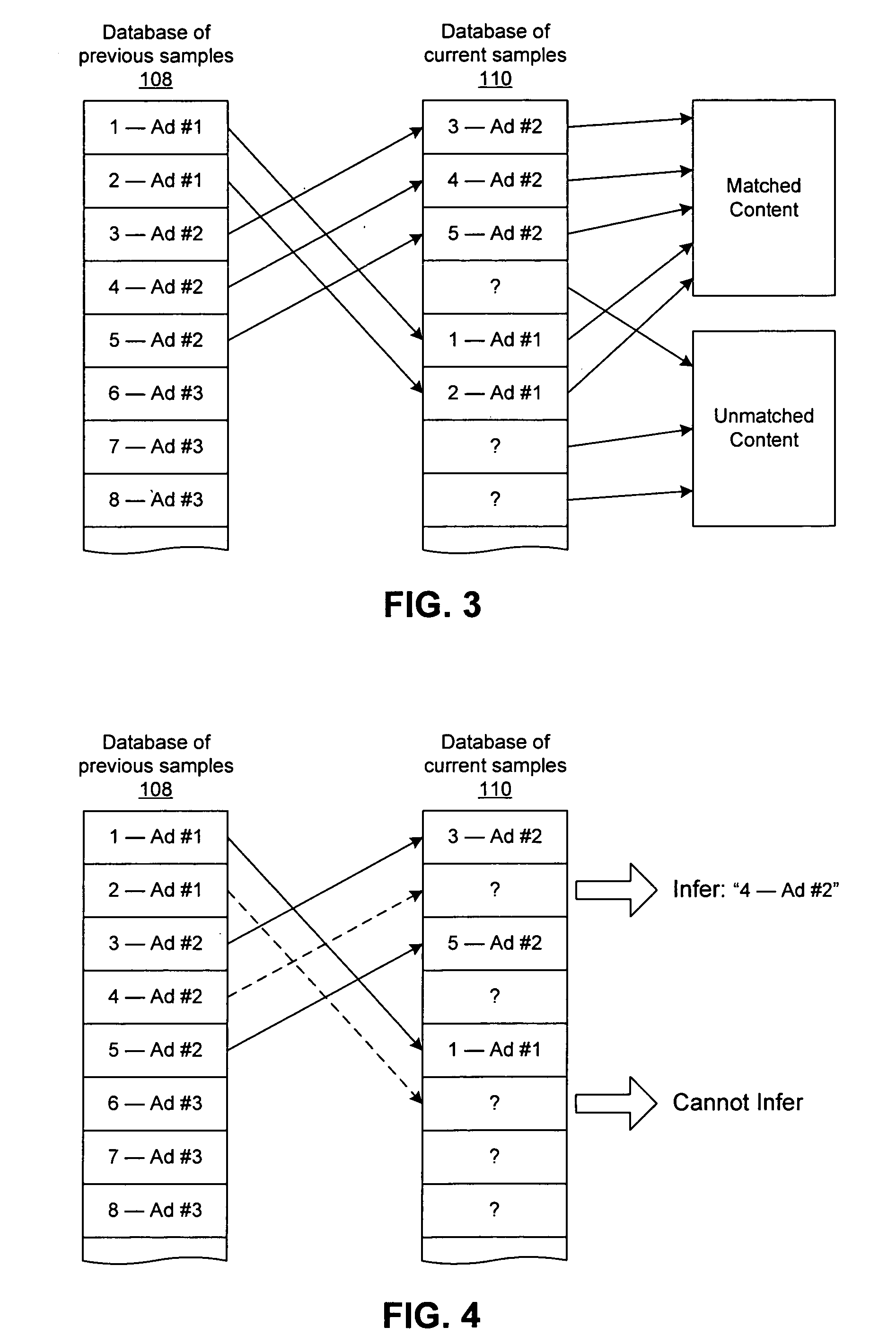Generation of a media content database by correlating repeating media content in media streams
a technology of repeating media content and media content, applied in the field of media content recognition, can solve the problems of prohibitively time-consuming and costly creation of the media content database, and the inability to gain access to the source media to fingerprint it,
- Summary
- Abstract
- Description
- Claims
- Application Information
AI Technical Summary
Benefits of technology
Problems solved by technology
Method used
Image
Examples
Embodiment Construction
[0019] Illustrated in FIG. 1 is one embodiment of a system that can be used to create and maintain a media content database 114 using an incoming media data stream 102. A content identification system 106 is configured to receive a media stream 102, which comprises one or more (typically unknown) media items 104n. As explained in more detail below, the content identification system 106 samples portions of the media items 104n in the media stream 102 to extract characteristic information from them and then stores that information in the previous samples database 108 and / or the current samples database 110. The content identification system 106 attempts to match samples in the current samples database 108 with samples in the previous samples database 110. Matched samples are made accessible by a reviewer through a user interface 112, which allows the reviewer to observe the matched media content and provide identifying meta-data for that content. The identified media content is then a...
PUM
 Login to View More
Login to View More Abstract
Description
Claims
Application Information
 Login to View More
Login to View More - R&D
- Intellectual Property
- Life Sciences
- Materials
- Tech Scout
- Unparalleled Data Quality
- Higher Quality Content
- 60% Fewer Hallucinations
Browse by: Latest US Patents, China's latest patents, Technical Efficacy Thesaurus, Application Domain, Technology Topic, Popular Technical Reports.
© 2025 PatSnap. All rights reserved.Legal|Privacy policy|Modern Slavery Act Transparency Statement|Sitemap|About US| Contact US: help@patsnap.com



